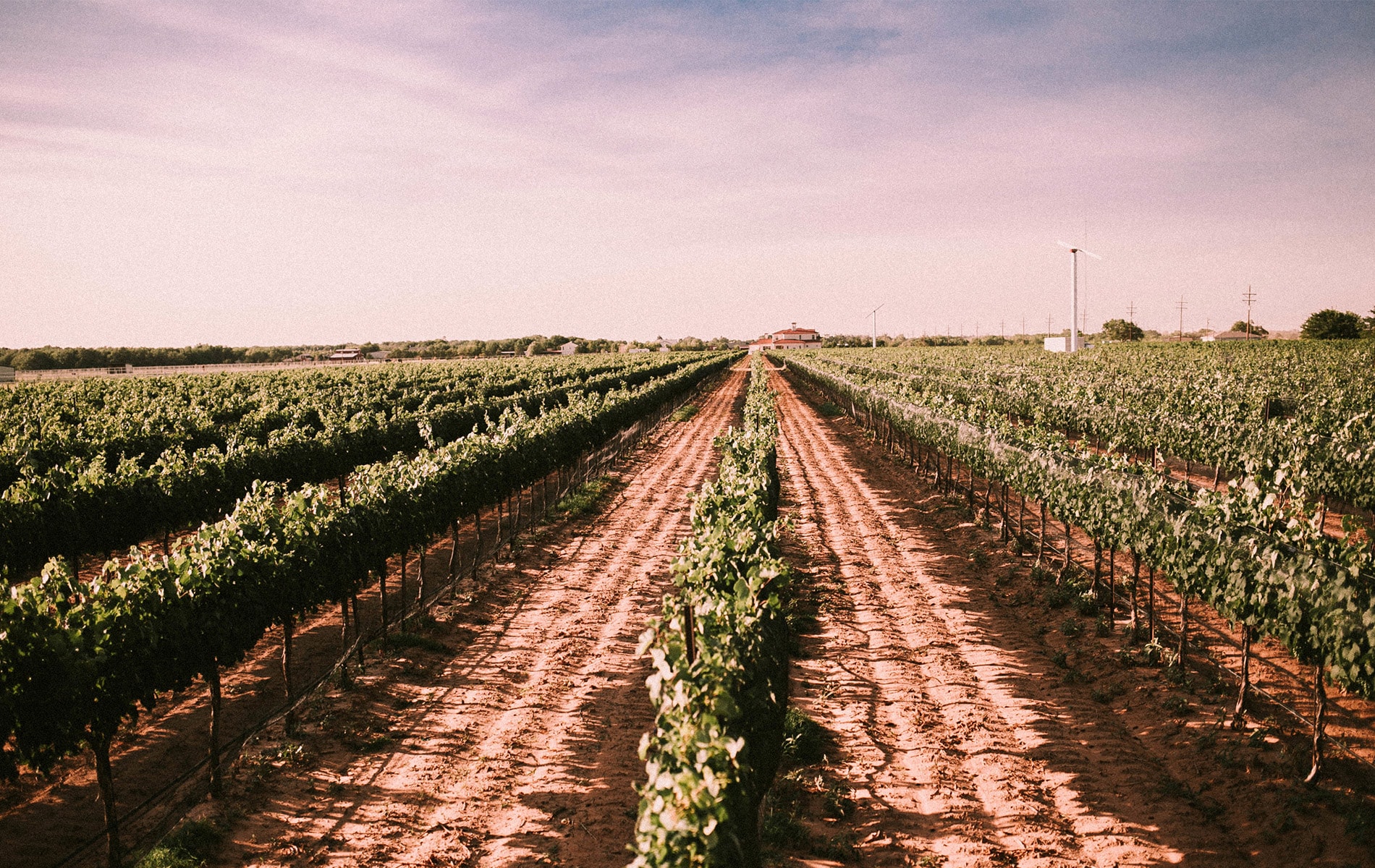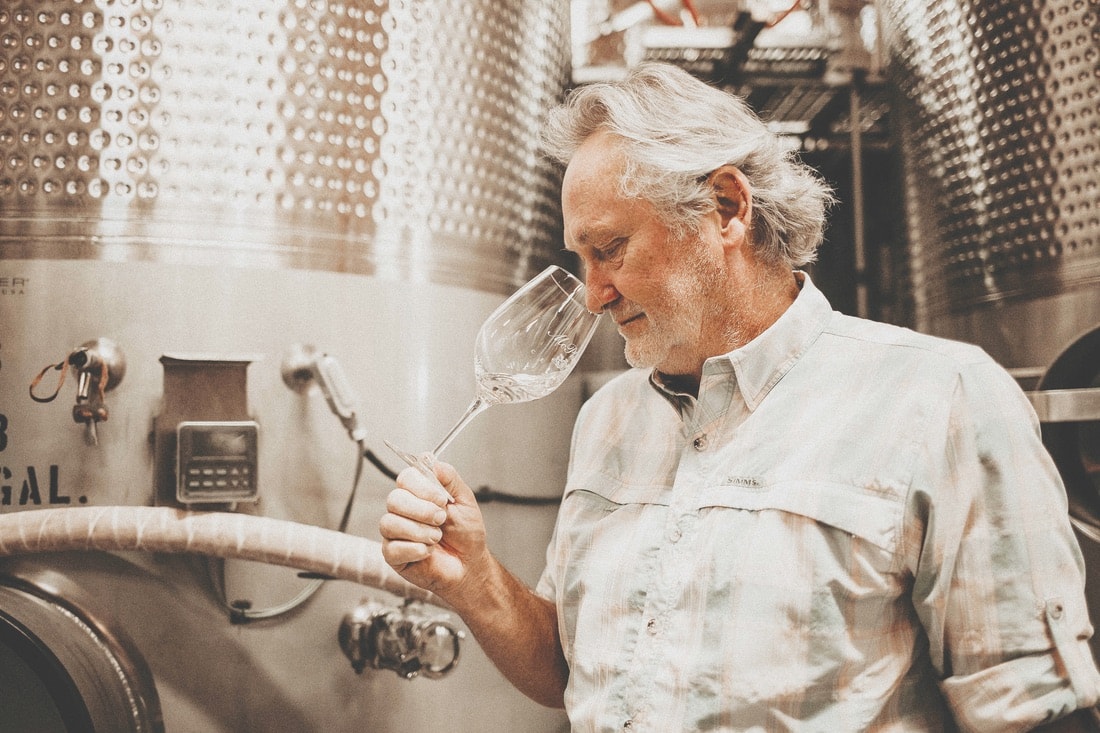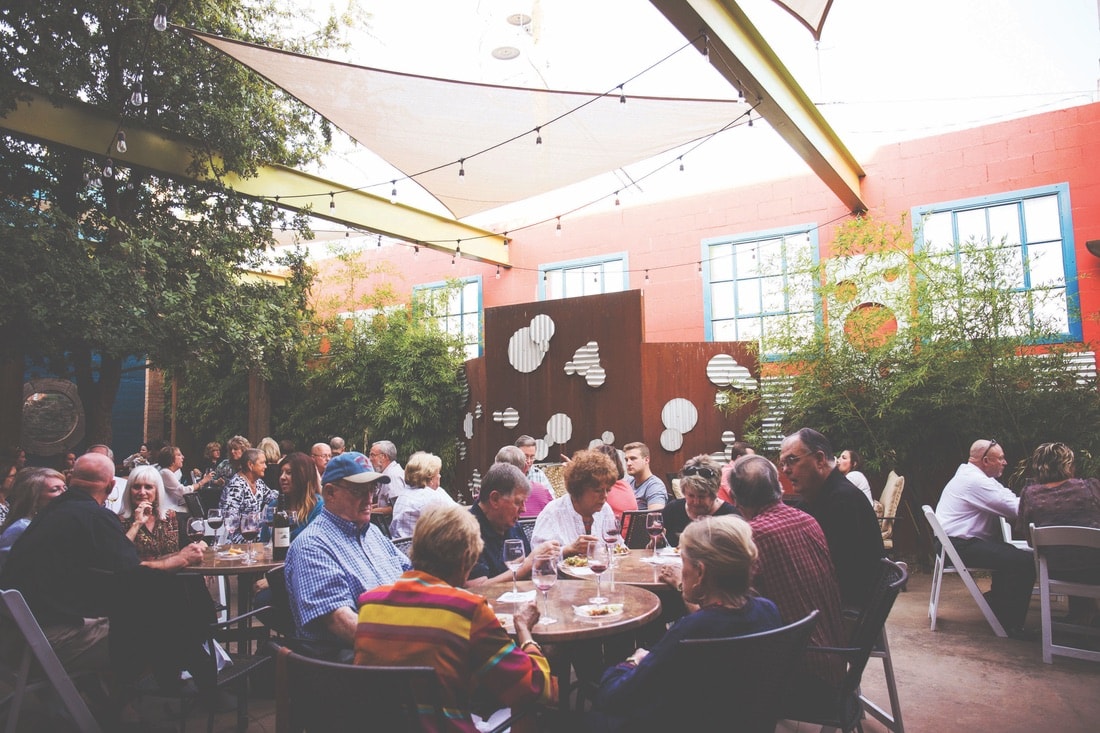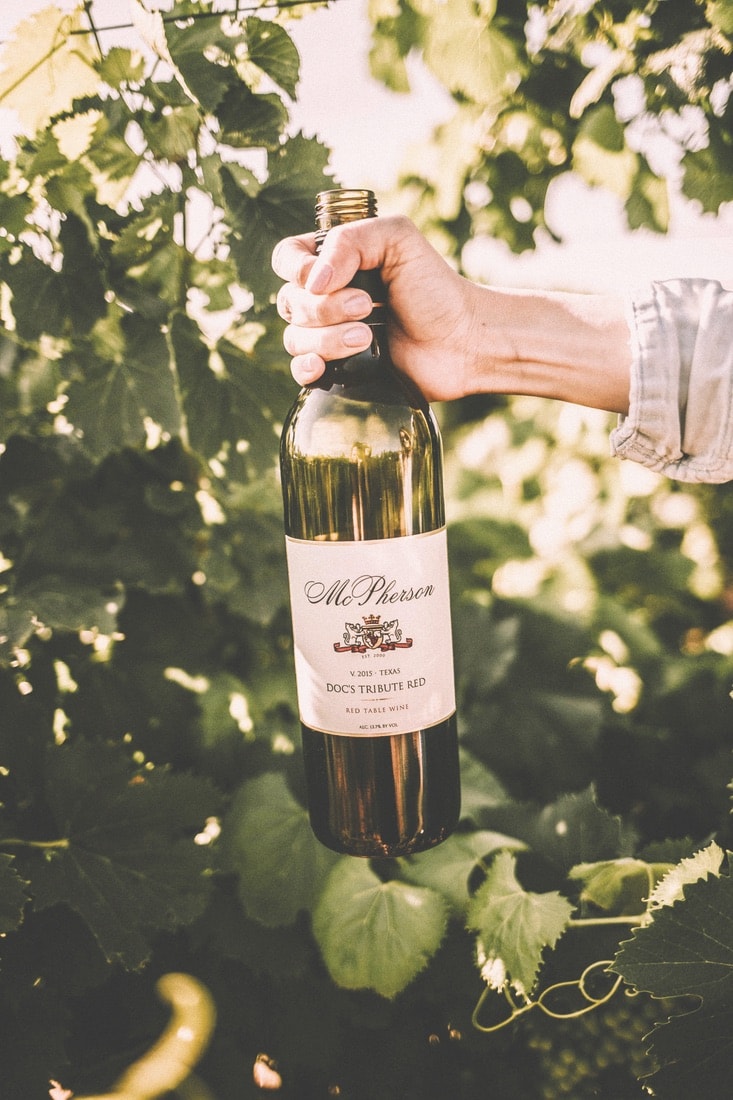
vie-magazine-texas-wine-hero-min
Photo courtesy of McPherson Cellars
The Napa Valley of the South
By Ilona Kauremszky
Sweep away the thin layer of dust that lies over the pancake-flat land in the South Plains region of Texas, and at first glance, the area appears to hold few riches. There’s nary a soul to be seen on the country roads near the town of Lubbock except for the occasional flying critter gliding in the updrafts in the sweltering West Texas heat.
Try and seek out a pheasant, a favorite fowl that graces ridges in the Texas Panhandle. Then, park the car at Pheasant Ridge Winery.
On the outskirts of town, Pheasant Ridge Winery’s vinifera rows spread out along the lands of what is arguably the oldest civilization in North America, tracing back twelve thousand years. Tourists now flock to the nearby Lubbock Lake National Historic Landmark to see art installations depicting the prehistoric woolly mammoths that used to stomp these grounds, while hikers explore the grass-fringed trails of the High Plains. From here, an easy twenty-minute drive will uncork another discovery that some locals have dubbed the Napa Valley of the South.
Pioneering Texas winemaker Bobby Cox of Pheasant Ridge, one of the oldest wineries in Texas, is as big and bold as his top-selling wines. In 1986, Cox produced the first Texas red wine to receive a gold medal at the prestigious San Francisco International Wine Competition. It was a wine history changer. Settling in front of his no-nonsense bar, he says, “I find it difficult to talk about wine without having a glass—would y’all like one?”

Left and opposite: Most people don’t think of Texas as a wine destination, but vintners such as those at McPherson Cellars are proving that the Lone Star State is a great place to raise a glass.
Photos courtesy of McPherson Cellars
As he stands sandwiched between the flags of France and Texas, Cox opens a bottle of his Old Vine Dry Chenin Blanc from 2015. The wines produced at Pheasant Ridge are from some of the oldest vinifera grapevines in Texas: they were planted on fifteen acres in 1978. At the time, it was the largest exclusively vinifera vineyard in the Lone Star State. The rest, as they say, is history.
Nearly 90 percent of Texas’s wine grapes are produced in the High Plains region, thanks to warm days, cool nights, low humidity, and shallow sandy ground. They say magic happens in this soil.
“It was the first white wine I made at Pheasant Ridge, and I am happy to do so once again in recognition of the quality of this noble grape of France,” Cox says. He smirks and opens another bottle, his cabernet sauvignon, which lassoed a silver medal at the San Francisco International Wine Competition. “It was recognized as a library wine,” says the vintner whose passion is purely evident in the quality of his wines—you can practically taste it the second you inhale the fruity notes of his top-selling vintages.
In Lubbock, the sky seems bigger, and the sun is hotter, yet the dusty, dry terrain is the backbone of many award-winning wines. Nearly 90 percent of Texas’s wine grapes are produced in the High Plains region, thanks to warm days, cool nights, low humidity, and shallow sandy ground. They say magic happens in this soil.

Left and opposite: Most people don’t think of Texas as a wine destination, but vintners such as those at McPherson Cellars are proving that the Lone Star State is a great place to raise a glass.
Photos courtesy of McPherson Cellars
Geographically the area lies in the Llano Estacado, which is home to one of the largest mesas in North America. It’s also home to the High Plains Wine and Vine Trail, a seventy-five- to one-hundred-mile loop that starts in Lubbock and gives visitors a chance to tour six wineries with daily tastings and tours.
Cox, like the rest of the local vintners, is no wine snob. He declares in his thick Southern drawl, “We don’t fuss around here.” Rival Napa may have its noblesse wines, but here, West Texas’s down-to-earth mantra sweeps across the plains.
It’s also home to the High Plains Wine and Vine Trail, a seventy-five- to one-hundred-mile loop that starts in Lubbock and gives visitors a chance to tour six wineries with daily tastings and tours.
All the destinations on the High Plains Wine and Vine Trail are within thirty minutes of the fossil yard at the Lubbock Lake Landmark site. A ten-minute drive to downtown Lubbock and you’ll find a local husband-and-wife team that has created two separate wine experiences.
Duck into McPherson Cellars, located in a retrofitted Coca-Cola bottling plant, and don’t be surprised if winemaker Kim McPherson is on-site for a wine tasting. “You’ll often find me here,” he says as the wine glasses hit the counter. McPherson grew up in the wine business. His father, Clinton “Doc” McPherson, was a chemistry professor at Texas Tech University who is hailed as one of the fathers of the modern Texas wine industry for his winemaking prowess.

Stops along the Texas High Plains Wine and Vine Trail include McPherson Cellars (pictured here), Bingham Family Vineyards and Winery, Caprock Winery, Newsom Vineyards, La Diosa Cellars, Llano Estacado Winery, and Pheasant Ridge Winery.
Photos courtesy of McPherson Cellars
Kim’s wife, Sylvia, has La Diosa Cellars just across the street from McPherson Cellars. La Diosa is like a cross between a set for a movie about Frida Kahlo and a hacienda laden with eclectic artwork, ceramic mosaics, and airy nooks for quiet conversations. On the first Sunday of every month, the cellar, which is also a Spanish bistro, turns into a musical jazz-brunch haven. Most days, it’s the ideal pit stop to sit back, relax, order some spicy dishes, and sip on sangria made from Kim’s zinfandel batch.
On a lazy, hazy afternoon, downtown Lubbock looks like tumbleweeds could roll across the broad thoroughfare any second. That’s a sign for another wine stop. Position your GPS for the final leg, which is either a seventeen-minute or a twelve-minute drive from La Diosa. (We decided on the quicker route, which would leave more sipping time on the other end!)

Stops along the Texas High Plains Wine and Vine Trail include McPherson Cellars (pictured here), Bingham Family Vineyards and Winery, Caprock Winery, Newsom Vineyards, La Diosa Cellars, Llano Estacado Winery, and Pheasant Ridge Winery.
Photos courtesy of McPherson Cellars
Off East 130th Street, a stunning neutral-toned facade shimmers like a mirage. There on the outskirts of Lubbock, in the middle of cotton country, stands the big daddy of the tour: Llano Estacado Winery. The largest, best-selling premium winery in Texas, Llano Estacado (Spanish for “staked plain”) has been in business since 1976 and recently underwent a renovation. Even the fall harvest in full swing doesn’t disrupt the complimentary wine tours; visitors inch past the barrels and sidle up to a shiny stainless steel tank for a taste. In a good old-fashioned Lubbock way, winemaker Jason Centanni opens the spigot to a freshly pressed tempranillo and asks, “Ready to drink some raw wine?”
That’s the fun of wine in Texas: it’s raw and unexpected. Take the drive down a dusty road to one of the premium wine regions in the United States and discover new sights, meet colorful vintners and viticulturists, and enjoy the bold flavors of the Wild West—no regrets!
— V —
For more travel and wine details in Lubbock, head to VisitLubbock.org/Wine.
Ilona Kauremszky is an award-winning travel journalist who has worked with leading publishers worldwide, including Fodor’s and Michelin, and with such publications as the Globe and Mail, the National Post, the Toronto Star, the Boston Herald, Canadian Geographic, ELLE, and more. When not writing, she collaborates on the digital TV channel mycompasstv.
Share This Story!
KEEP UP WITH THE LATEST STORIES FROM VIE
















































































































































